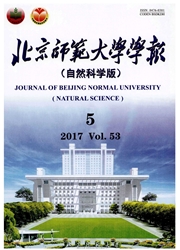

 中文摘要:
中文摘要:
研究了我国重点杨树培育区10个不同品系生长季内光能转化固碳量中CO2同化量变化.实验结果发现,叶片光合中心的实际光化学猝灭达到0.5~0.6之间时,固碳同化量达到最大,不同品种固碳量不同;在7月份光能转化中固碳率最大,随着季节的变化各个品系的杂交杨达到最佳的实际光化学效率的光饱和的转折点发生变化;本地种1467、P64、DA随季节的变化逐渐增大,其他本地种不变;引进种只有DN2不变,其他种均随季节的变化而变化.研究表明在低光区叶片更容易达到较高的光化学效率,在高光区反而随光的增强而有所降低,这体现了植物叶片对强光的自我保护特性;CO2同化效率与光化学效率成正相关,随光化学效率增强不断增强,当达到0.5~0.6时开始降低,变成负相关.
 英文摘要:
英文摘要:
Quantum yield for CO2 assimilation (5 (CO2)) reached a maximum when photosynthetic efficiency was 0.5- 0. 6, different varieties of the 10 planted poplar eultivars showed varied assimilation; Quantum yield for CO2 assimilation was largest in July during the growing season. Light saturation turning point changed when photosynthetic efficiency was at the maximum. Light saturation turning point of indigenous species I467, P64 and DA increased gradually with changing seasons, but others'id not change; DN2 for non- indigenous species did not change, ut the rest'hanged with seasons. Photochemical efficiency in leaves could reach a maximum in low light~ photochemical efficiency decreased with increasing light intensity in high light; therefore leaves had a self-protective mechanism; Quantum yield for CO2 assimilation increased with increasing photochemical efficiency, when photochemical efficiency was at 0. 5 - 0. 6, quantum yield of CO2 assimilation started to decline.
 同期刊论文项目
同期刊论文项目
 同项目期刊论文
同项目期刊论文
 Comparison of the performance of several hybrid poplar clones and their potential suitability for us
Comparison of the performance of several hybrid poplar clones and their potential suitability for us 期刊信息
期刊信息
